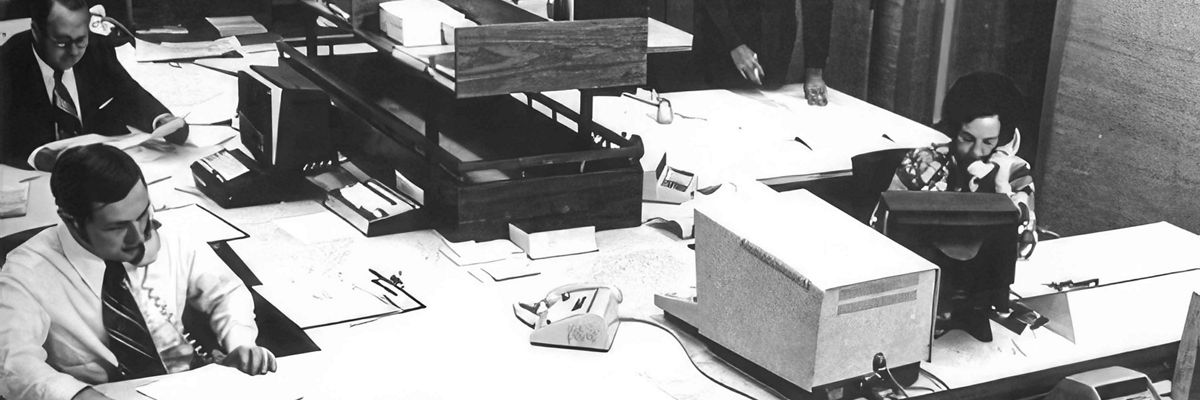
Championing Investor Knowledge: The Birth of MFS’ In-House Research Department
Following the Great Crash of 1929, MFS sought to restore confidence in the mutual fund industry through transparent information sharing and creating one of the first in-house research departments.
Just after the Stock Market Crash of 1929, the nation was firmly in grip of the Great Depression, a global economic crisis exacerbated by salesmen pushing unsubstantiated stock tips on behalf of firms that put profits over people. Investor confidence and trust had hit rock bottom. But MFS’ actions during this difficult period showed the firm’s commitment to putting the needs of clients and end investors first.
This sense of stewardship drove two of MFS’ leading innovations in the early 1930s to restore confidence in the mutual fund industry: transparency through information sharing and the creation of an in-house research department that afforded comprehensive knowledge about the companies MFS owned.
It all started with someone who frequently told his colleagues that he was “no investment man,” but Merrill Griswold, the first chairman of Massachusetts Investors Trust (MIT) — present-day MFS — understood people. In particular, he understood how to instill the confidence so many had lost after the market crash.1 He figured that to rebuild trust, frustrated investors needed to see how investment firms made decisions to buy, sell or hold securities on their behalf. So one of Griswold’s early initiatives was to create what he called “goldfish bowl” reports for shareholders which provided access to MIT’s sales charges, financial performance and portfolio changes. This unprecedented approach to transparency treated shareholders like partners and, more important, helped build stronger relationships with them.2,3
But sharing information was only half the battle. Griswold knew investors also needed to trust the investment process, which meant the firm had to know each business inside and out, and that level of knowledge and conviction could only come from doing its own research. So, in 1932, MFS created an in-house research department aimed at building in-depth knowledge of portfolio securities.

This unprecedented approach to transparency treated shareholders like partners and, more important, helped build stronger relationships with them.

Dwight P. Robinson, a brilliant Harvard-educated analyst was recruited to lead and run the department.4 Not only was he MFS’ first director of research, but he was also the first director of research in the industry. Both Robinson’s appointment and his approach were groundbreaking, as he engaged in a detective-like process, redefining what the industry considered fundamental research and placing a strong emphasis on statistical analysis.5 Robinson’s research department was built out with MFS’ first advisory board, so that together they could carefully scrutinize all investment opportunities to make the best possible decisions.
Early on, MFS recognized that being on-site and in person reveals just as much about a business as its balance sheet. Before committing any funds to an investment,6 there were visits to plants, factories and company headquarters, as well as meetings with senior management.
Robinson’s tactics of poring over financial statements and market reports and making analytical site visits continued with the next generations of MFS researchers. As David Antonelli, a research analyst who joined the firm in 1991 and went on to be equity CIO and vice chair, explained, “Our approach today remains a ‘bottom-up’ process that requires ‘kicking the tires’ of a company, regardless of market or location, and meeting with senior executives to ask ‘probing questions’ informed by expert, long-term investment analysis.”
What Robinson began not only catalyzed the building of MFS’ research department, it also became foundational to MFS’ active management philosophy — the necessity of understanding everything material about a portfolio company to determine whether or not it can create long-term value. Over the past 100 years, MFS’ teams of expert researchers have analyzed countless prospects, from early microwave technology in the US, to the viability of a grocery store chain in the UK to a Finnish cell phone innovator.7
A department that started with one fund in 1932 grew into a global research platform, fueled by the same purpose with which it began. “We really believe in our hearts and our souls,” said present-day MFS President and Head of Global Distribution Carol Geremia, “that we need to understand everything that we own with other people’s money. That’s why we committed to active management . . . and that’s why we have built the research platform that we have . . . because we want to get to the best information, the best idea that we possibly can, before we make an investment decision.”
Please note: Not all of the funds included in this material may be available for sale in your country.
Endnotes
2Wilson, Julia A. A Story of Progress: On the Twenty-Fifth Anniversary of Massachusetts Investors Trust. (1949) Massachusetts Investors Trust. Boston. Page 14.
3Wilson, page 14.
4Wilson, page 6.
5Wilson, page 13.
6Wilson, page 13.
7Wilson, page 9.